If you’re a birdwatching enthusiast, you’ll find that Montana lives up to its nickname as the Treasure State. The almost 440 bird species that live there both permanently and temporarily are a treasure and a sight to behold for sure.
While we would love to tell you about every beautiful feathered friend you could make there, our focus today is specifically on the traditional symbol of wisdom: the owl. Avid birdwatchers can expect to see 15 species of owls in Montana, and luckily for you, we’re giving you a rundown of all of them. You’ll have everything you need to know, from where to find them to what they eat!
Sound intriguing? Then, read on!
Great Horned Owl
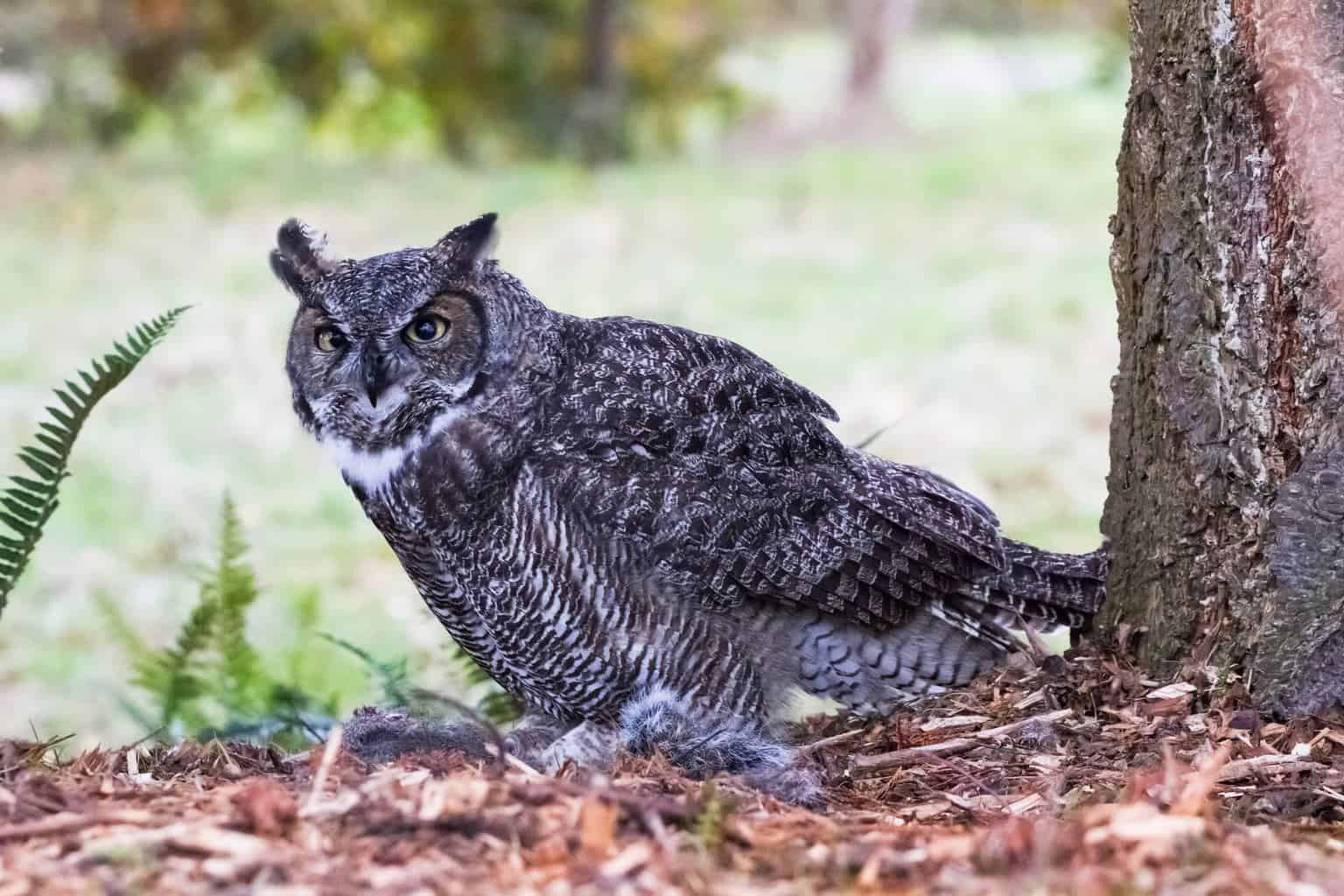
- Scientific Name: Bubo virginianus
- Length: 17-25 inches
- Weight: 32-88 ounces
- Wingspan: 36-60 inches
The great horned owl is the most widespread species in Montana, and you’ll recognize it by its mottled grey-brown body, reddish face, and yellow eyes. Its horns aren’t actual horns; instead, they’re ear-like tufts of feathers that make the already-fierce predator look even more intimidating.
This owl has a death grip and is known to go after animals that are larger than it is, including powerful raptors like ospreys and prairie falcons. It also feeds on skunks that other owls won’t eat because of their strong smell.
Barn Owl

- Scientific Name: Tyto alba
- Length: 13-15 inches
- Weight: 14.1-24.7 ounces
- Wingspan: 31-37 inches
There’s an excellent chance you’ll see the barn owl near Montana’s Mission Range. The medium-sized owl has pale buff and grey plumage and black eyes.
Barn owls don’t hoot; instead, they produce a loud scream that humans find uncomfortable at a close range.
The bird usually roosts in tree cavities all day and hunts during the first few hours after nightfall. It depends on its strong sense of hearing to locate prey in total darkness, and it mainly feeds on small mammals like voles, shrews, and small rabbits.
Eastern Screech-Owl

- Scientific Name: Megascops asio
- Length: 6.3-9.8 inches
- Weight: 4.3-8.6 ounces
- Wingspan: 18-24 inches
The eastern screech-owl has a reddish-grey body that’s perfect for keeping it camouflaged while it roosts. But no need to worry you’ll miss out on spotting it, as the bird has a loud call that will likely lead you right to it at night.
However, if you can’t see or hear the bird, you’ll be able to tell one is nearby when songbirds fly and scream to scare them away.
When it’s time to find a meal, the eastern screech-owl goes out in search of rodents, birds, earthworms, or crayfish. Sometimes, these birds can be cannibalistic, even going after each other!
Western Screech-Owl
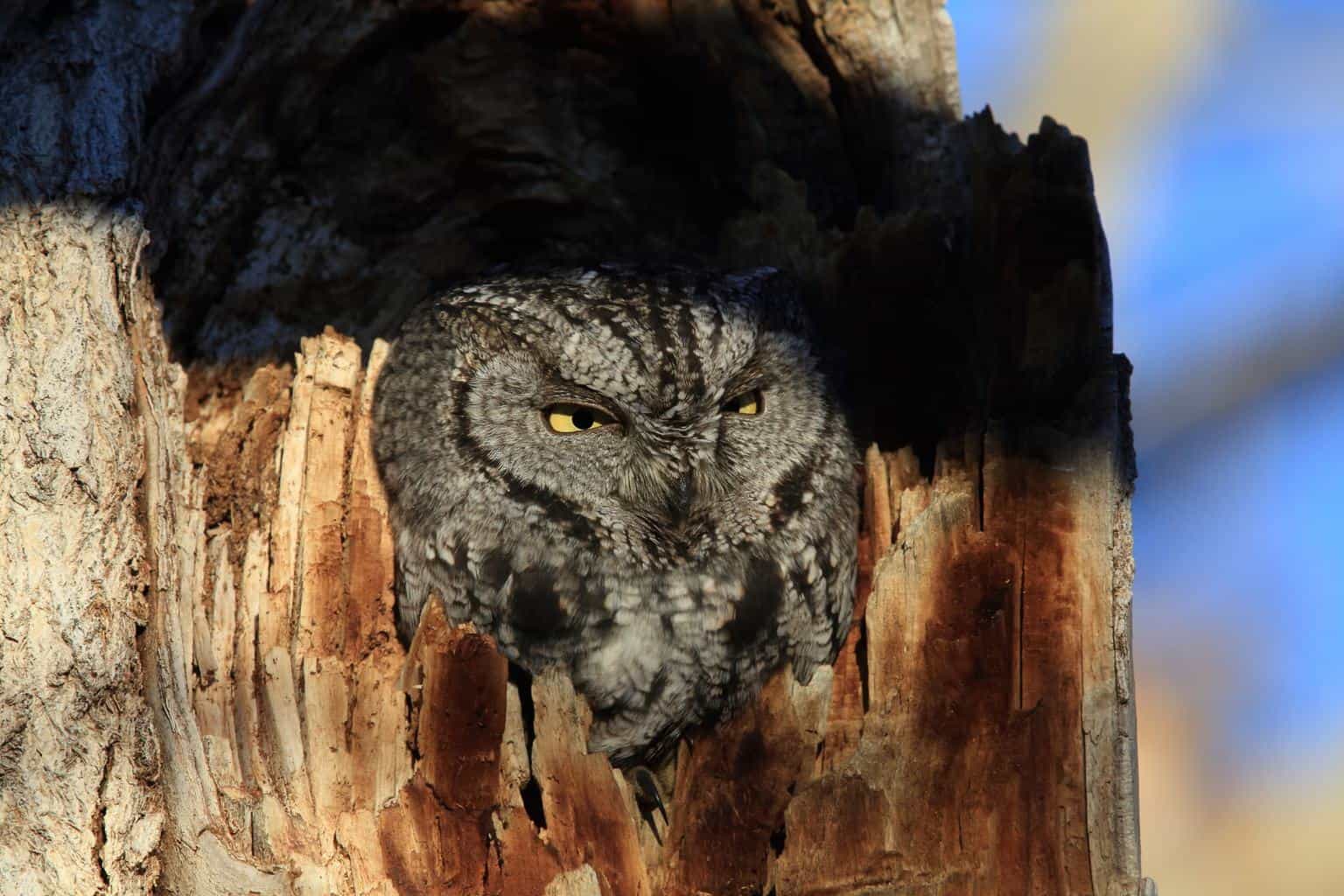
- Scientific Name: Megascops kennicottii
- Length: 8.7 inches
- Weight: 5 ounces
- Wingspan: 22 inches
You’ll recognize this small brown or dark grey owl by its square face and visible ear tufts. The western screech-owl also has a blackish-grey beak, unlike the yellow one of the eastern species of the bird.
The owl usually roosts at a cavity entrance, but it presses its body against the tree bark to stay invisible. This camouflage is why the western screech-owl is usually heard but rarely seen in Montana.
Western screech-owls tend to take on prey bigger than they are, but they’ll also feed on rodents, invertebrates, insects, or bats. It avoids areas populated by the larger great horned owl for its own safety, but it doesn’t mind nesting close to people.
Flammulated Owl
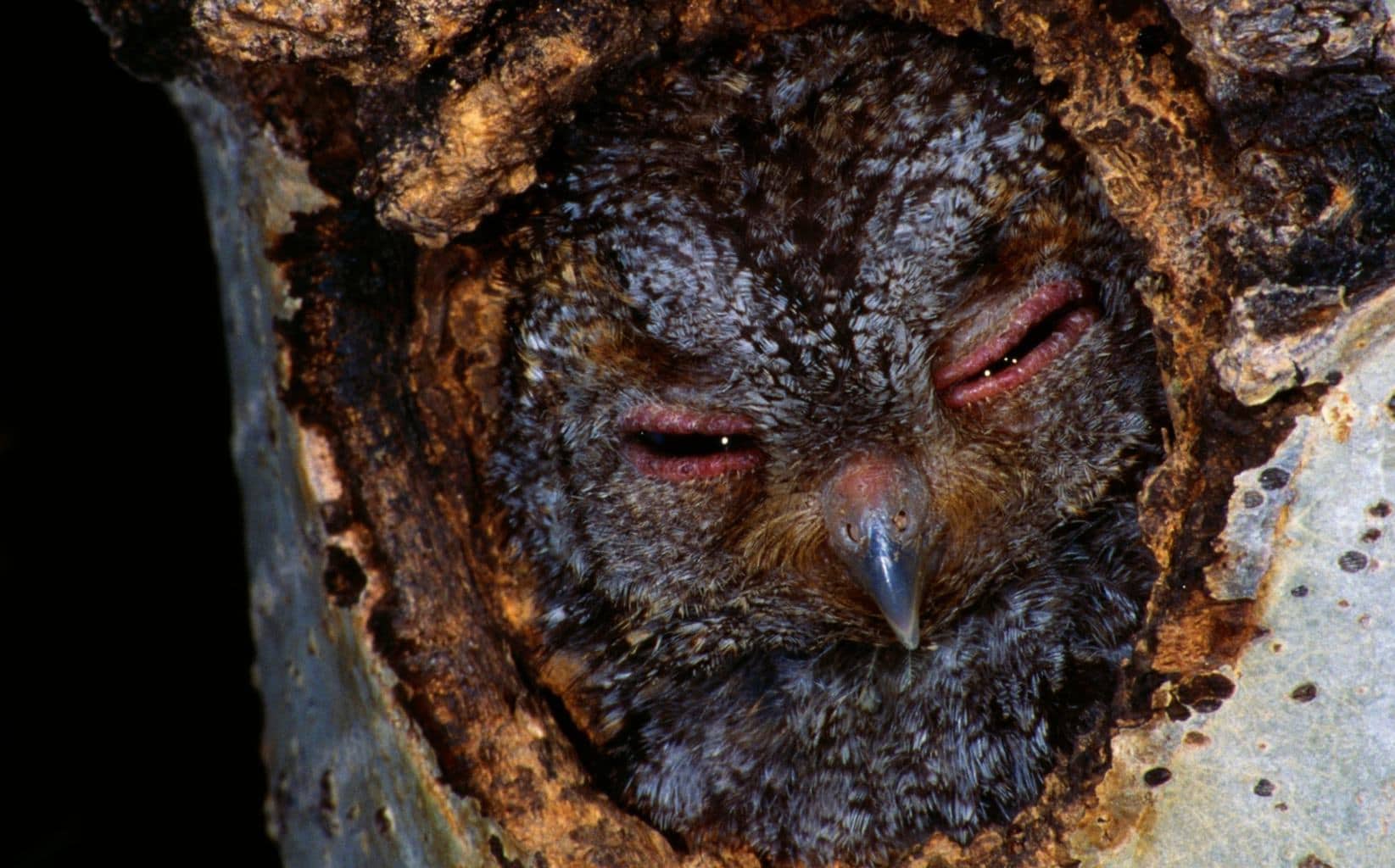
- Scientific Name: Psiloscops flammeolus
- Length: 6 inches
- Weight: 1.8-2.3 ounces
- Wingspan: 14 inches
The flammulated owl is a tiny bird that looks very much like a western screech-owl but has shorter ear tufts. Its plumage is grey, brown, white, and rust-colored, which makes its feathers perfect for camouflage. It also has a low hoot, making it even more difficult to locate the bird.
Flammulated owls feed on insects like grasshoppers, crickets, owlet moths, and beetles, and it usually hunts them by night as they fly. When it’s time to nest, birds of this species prefer tree cavities, but they’ll also accept nest boxes.
Northern Pygmy-Owl

- Scientific Name: Glaucidium californicum
- Length: 6.3-7.1 inches
- Weight: 2.1-2.5 ounces
- Wingspan: 16 inches
The northern pygmy-owl is a brown bird that’s sprinkled with fine white speckles. It hunts by day, so it’s easier to see than other owl species in Montana. You’ll also know it’s near when there’s a cluster of songbirds around; they usually mob to push it away.
Unlike the screech-owl and northern saw-whet owl, the northern pygmy-owl doesn’t accept man-made nest boxes. Instead, it prefers to nest in cavities carved by woodpeckers or that have naturally occurred because of rot.
When it needs a meal, the northern pygmy-owl usually feeds on hummingbirds, chickadees, and sparrows, as well as moles and shrews. In some cases, however, it might take on larger prey and insects.
Northern Hawk-Owl

- Scientific Name: Surnia ulula
- Length: 14.2-16.7 inches
- Weight: 11 ounces
- Wingspan: 18 inches
The northern hawk-owl’s oval body and yellow eyes make it look like most other owls, but its hunting habits — sitting atop of trees, scouting prey during the day — are what makes it similar to the hawk. The bird sports brown feathers above and a white face.
This species of owls can detect prey by sight from half a mile away, which is great news for the northern hawk-owls but awful news for the voles and occasional birds they eat. Although this bird has weaker hearing than other owls, it can still detect its prey, even if it’s buried under snow.
Burrowing Owl
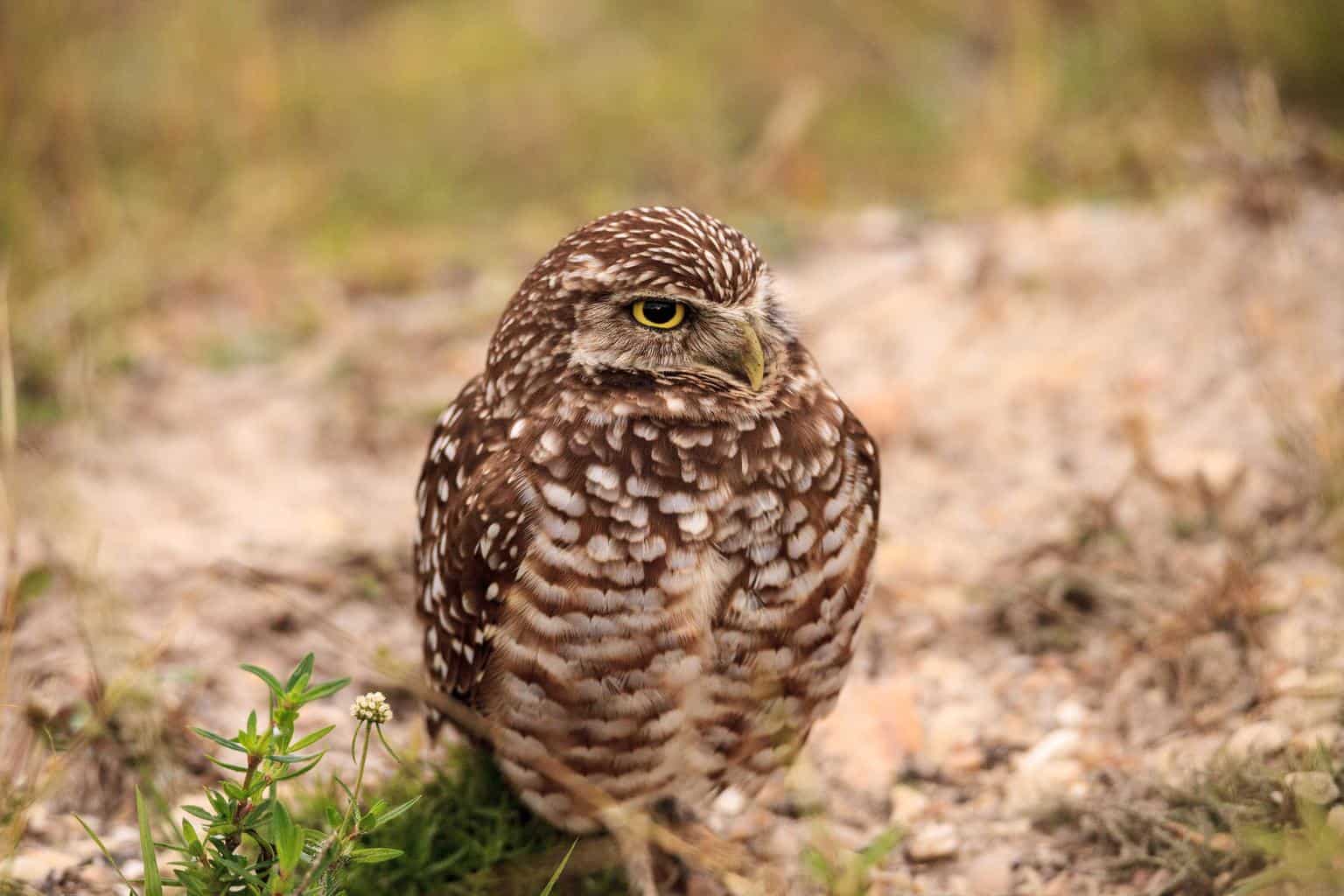
- Scientific Name: Athene cunicularia
- Length: 7.5-11 inches
- Weight: 4.9-8.5 ounces
- Wingspan: 20-24 inches
The burrowing owl is a small sandy-colored bird that usually hunts on the ground. It lives in underground burrows, usually those that have been dug by a ground squirrel or prairie dog.
When there aren’t any burrows nearby, the burrowing owl can nest on top of man-made objects, like PVC pipes and buckets or tubes.
These owls have a diverse diet that includes small vertebrates and invertebrates alike, including grasshoppers, crickets, voles, songbirds, and even young burrowing owls. Females catch invertebrates during the day while males prefer to target vertebrates at night.
Barred Owl

- Scientific Name: Strix varia
- Length: 16-25 inches
- Weight: 16.6-37 ounces
- Wingspan: 38-49 inches
The barred owl is mottled brown or grey and has big black eyes that enhance its night vision. You’ll hear its varying calls from a distance of half a mile away and see it nesting in tree cavities.
This nocturnal owl feeds on small rodents, invertebrates, and birds. It might even perch near bodies of water to catch a fish from time to time. When it’s nearby, mobs of woodpeckers, crows, and songbirds will try to scare it off, and its nests can be preyed upon by hawks and larger owls.
Northern Saw-Whet Owl
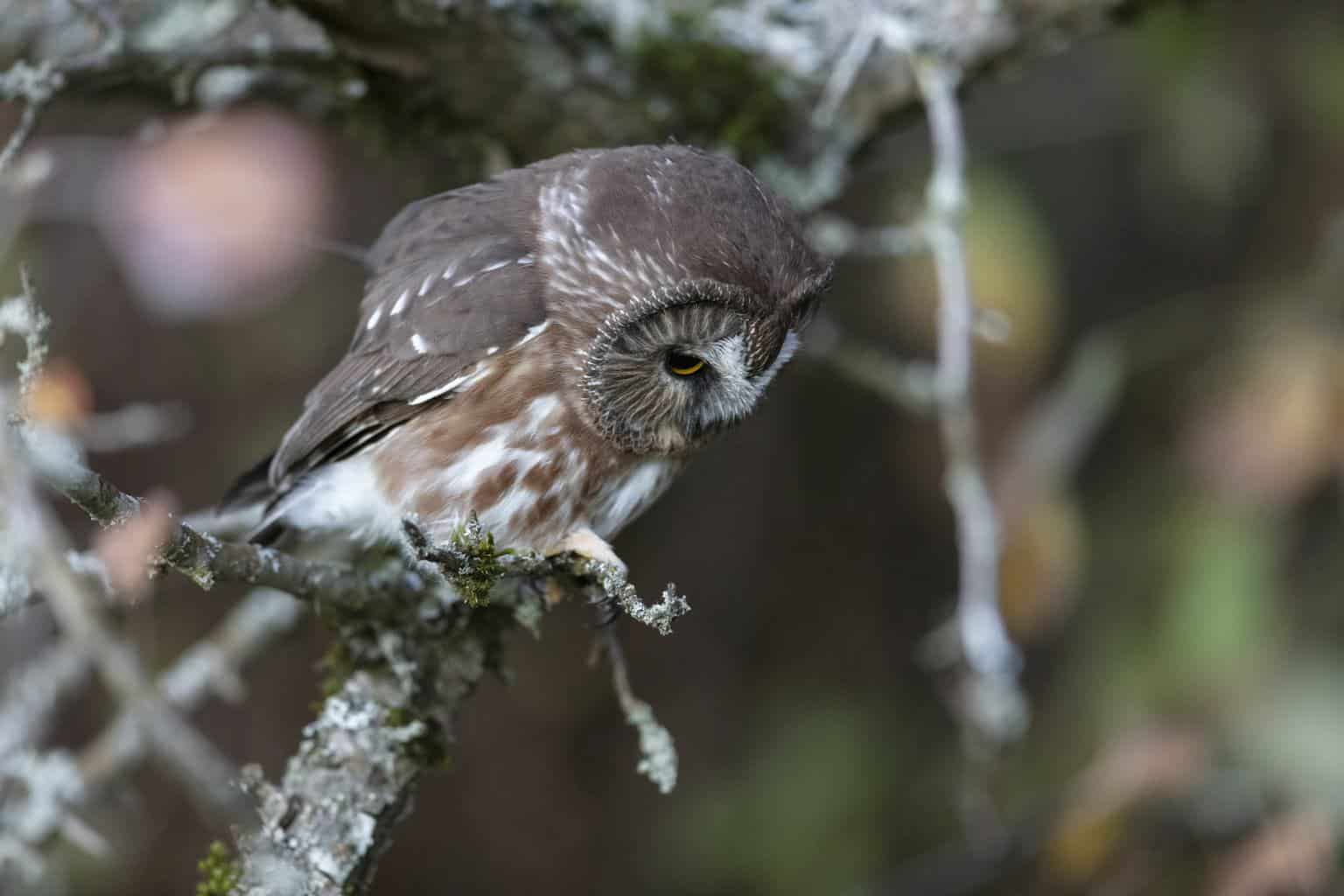
- Scientific Name: Aegolius acadicus
- Length: 6.7-8.7 inches
- Weight: 1.9-5.3 ounces
- Wingspan: 16.5-22.2 inches
The northern saw-whet owl is small with yellow eyes and a mottled brown body, and this shy bird can be seen perching at eye level when it hunts at night.
Northern saw-whet owls feed on deer mice, white-footed mice, voles, and shrews, and are preyed upon by larger predators, like hawks. When they aren’t being hunted by bigger birds of prey, songbirds occasionally team up to push a roosting northern saw-whet away from them.
Long-Eared Owl

- Scientific Name: Asio otus
- Length: 12-16 inches
- Weight: 7.8-15.3 ounces
- Wingspan: 34-40 inches
Our friend the long-eared owl is slim and has dark plumage and ear tufts. This nocturnal owl is an impressive camouflager, and its long and low hoot can be heard at night from a distance of up to 0.7 miles away.
This owl usually feeds on small mammals and might catch small birds on the ground. Thanks to its superb hearing, finding its prey in total darkness won’t be a problem.
When the long-eared bird needs a nest, it isn’t very likely to build its own. Instead, it takes over one that’s been abandoned by the American crow or the common raven.
Short-Eared Owl

- Scientific Name: Asio flammeus
- Length: 13-17 inches
- Weight: 7.3-16.8 ounces
- Wingspan: 33-43 inches
It’s quite common to see the short-eared owl during the day, usually close to its smaller cousin, the long-eared owl. It has ear tufts, but they’re invisible or difficult to see.
The short-eared owl is mottled brown and feeds on small rodents, but it may also catch songbirds and shorebirds. These birds are rather fierce, often taking off other birds’ wings before they eat them! That fierceness doesn’t keep them out of harm’s way, however; its natural predators include the snowy owl and foxes or dogs that may steal their eggs.
The short-eared owl builds its own nest, usually on top of an old one.
Boreal Owl

- Scientific Name: Aegolius funereus
- Length: 8.7-10.6 inches
- Weight: 3.3-7.6 ounces
- Wingspan: 20-24 inches
The boreal owl is a small bird with brown plumage and white spots. This unsocial nocturnal owl usually stays silent as it perches and waits for its prey.
Between February and April, the boreal owl can be heard, but it’s rarely seen. This owl usually nests in natural cavities in tree bark or those left behind by woodpeckers, but it will also accept nesting boxes.
When hungry, the boreal owl feeds on mammals and birds.
Snowy Owl
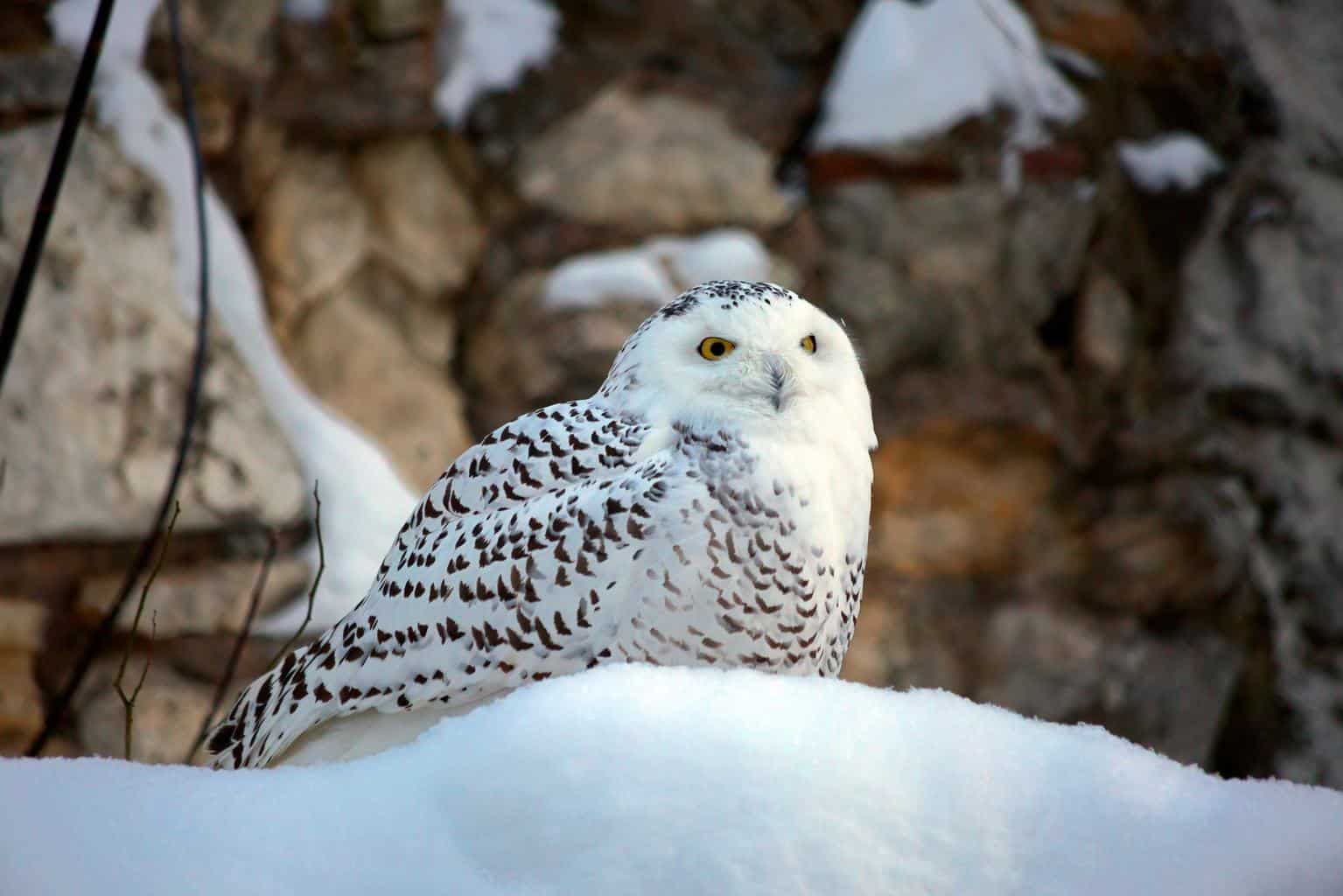
- Scientific Name: Bubo scandiacus
- Length: 20-25 inches
- Weight: 2.9-5.5 pounds
- Wingspan: 46-65 inches
The snowy owl spends its winter in Montana, and it’s one of the biggest owls you’ll see in the state. The owl has cat-like eyes and white plumage, although its feathers look less pure thanks to the dark markings on juvenile and female birds.
You’ll find this snowy owl near Glacier National Park, and it usually prefers treeless areas and wide spaces. The diurnal bird is an agile raptor that can catch other birds when they’re flying. It also feeds on small rodents.
Great Grey Owl

- Scientific Name: Strix nebulosa
- Length: 24-33 inches
- Weight: 2.2-2.84 pounds
- Wingspan: 5 feet
The great grey owl is a large bird with heavy silverish-grey plumage and a white collar. It prefers not to call attention to itself, and because of this, it usually perches away from people.
This owl hunts at night and can break through the snow to find a hidden mammal. It usually feeds on voles, mice, lemmings, and chipmunks.
When the bird is ready to nest, the great grey owl usually chooses one that’s already been built by the common raven or western grey squirrel.
Wrap Up
Your time in Montana is a fantastic chance to learn about all the intriguing birds that live there, especially all the beautiful owls we mentioned above. You might encounter these curious birds during the daytime, but if you aren’t having any luck, try to pay them a special visit at night to take a closer look!

